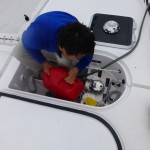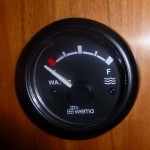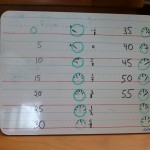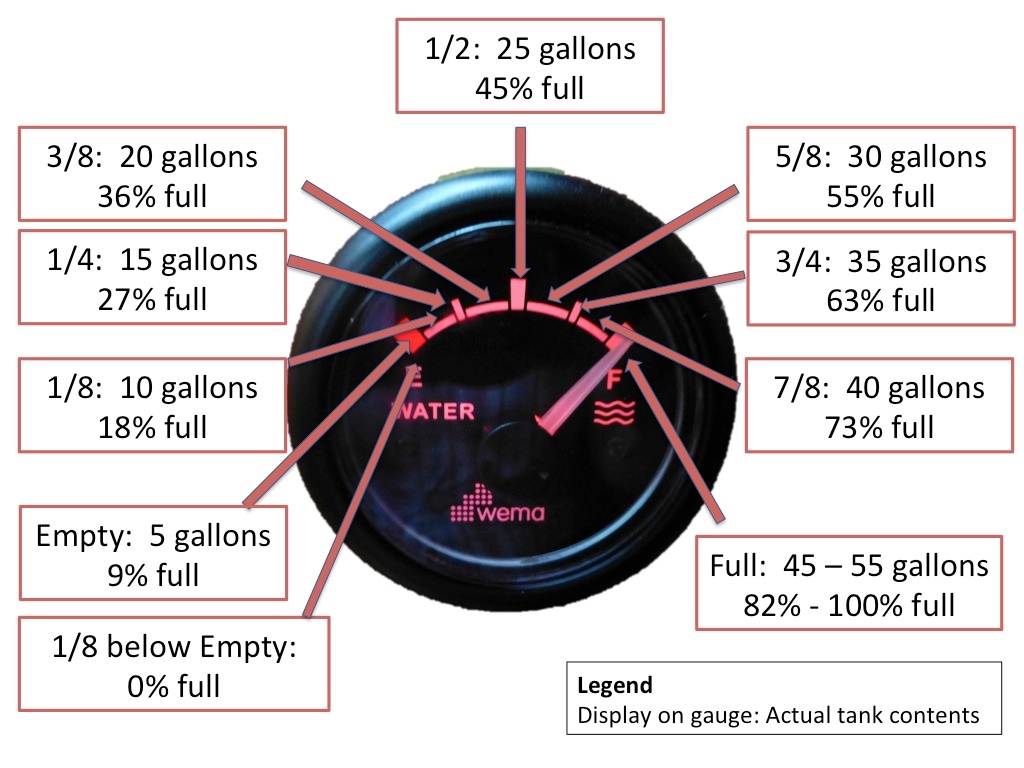On land, when you have guests over to your house, they often enjoy the nickel tour. They examine the kitchen, admire the living room and glance at the office. Imagine if they went straight for your electrical panel or your water pump. Boat guests do just that and it takes some time to get used to the change in personal space. Cruisers are running little cities. We produce water, manage its supply, run generators, and have small solar arrays.
The finite resources on board are water, diesel, electricity and food. Diesel is often considered king as it can create electric power via the generator, which among other things powers the water maker. In the muddy waters of the Plata our water can only come from a hose on shore – and we consume it at a brisk pace. We use it to wash dishes, wash bodies (we have a nice shower) and supply our fresh water head. Most boats use salt water to run their heads but this can bring smelly sea life onboard. Without being strict on our consumption, one of our two water tanks lasts about 2 days. With our current easy access to water, we have been a bit profligate. Kind of like the economy with easy money?
- Jason groaning while pouring
- Water tank fully empty
- Tank fill tracking system
The water tanks follow the shape of the hull, so they are wider at the top than at the bottom. I was curious to measure the accuracy of the water gauge. So began an epic time-wasting mission. With my starboard tank empty, I manually filled the tank using a 5 gallon jug. I quickly discovered that the full gerry can weighs 45 pounds. After each gerry was emptied, my reluctant assistant took a photo of the tank gauge. 45 minutes later and we discovered that the gauge is pretty good. We were expecting the tanks to hold 60 gallons, but they held 55 gallons. The position of the pick up ,can attribute to some of the missing gallons. If you care, this drawing should help you obsessively manage your Antares water tanks.




6 Responses to How much water is left in the tanks?